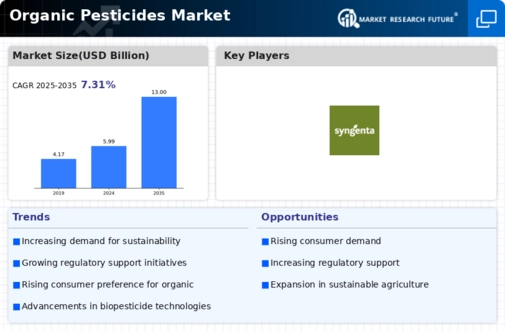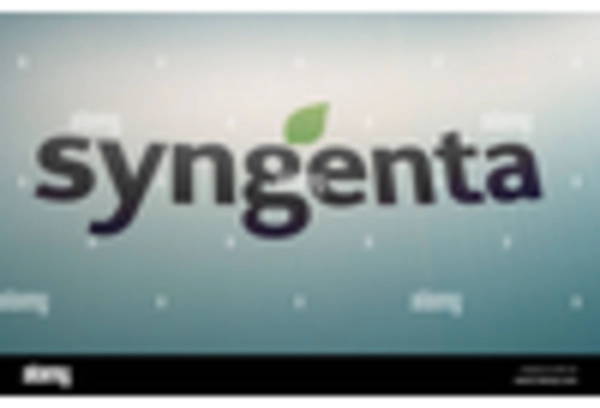Market Share
Organic Pesticides Market Share Analysis
The organic pesticide market is currently experiencing significant developments that signify the changes in the global agriculture industry as well as the pest management sector. This is seen through the trending demand for organic pesticides being fueled by increasing consumer awareness and preference for sustainable and eco-friendly farming methods. Moreover, the integration of pest management (IPM) is another factor that influences the organic pesticide market. Integrated pest management (IPM) involves different approaches to controlling pests, including biological, cultural, and mechanical, besides the application of chemicals as per insecticides' composition. The role that organic pesticides play when it comes to IPM strategies indicates that they are derived from natural sources like plant extracts, essential oils, or beneficial microorganisms. This trend underscores a broader industry focus on minimizing reliance on synthetic chemicals while embracing sustainable methods of pest control that support ecological stability. Another important trend in the organic pesticide market is a global focus on sustainable agriculture and biodiversity conservation. Organic pesticides are intrinsically compatible with sustainable agricultural practices as they target specific pests while causing minimal damage to non-target organisms. The other driver behind the changing business landscape in Organic Pesticides is the technological advances and innovations witnessed in organic pesticide formulation technologies. Manufacturers' investment in research and development enables the production of more efficient and sustainable organic pest control products, including formulations with better stability, effectiveness, and compatibility with modern farming methodologies. Similarly, formulation technology improvements are addressing issues pertaining to shelf life durability as well as application efficiency of biopesticides, thereby making them suitable for mass applications. Moreover, there is also a trend toward the use of biopesticides within the organic pesticides segment. Biopesticides made from living organisms such as bacteria, fungi, and viruses are being considered as alternatives to traditional chemical pesticides that exhibit specific modes of action targeting certain pests, making them compatible with organic farming principles. In summary, some of the key trends defining the Organic pesticide market include growing demand for organic alternatives, adoption of integrated pest management techniques, emphasis on sustainable agriculture, advancements in pesticide formulation technologies, and the emergence of biopesticides. These trends collectively represent how industries are increasingly seeking environmentally friendly, socially responsible, and commercially viable approaches to pest management that align with Sustainable Agriculture.

















Leave a Comment